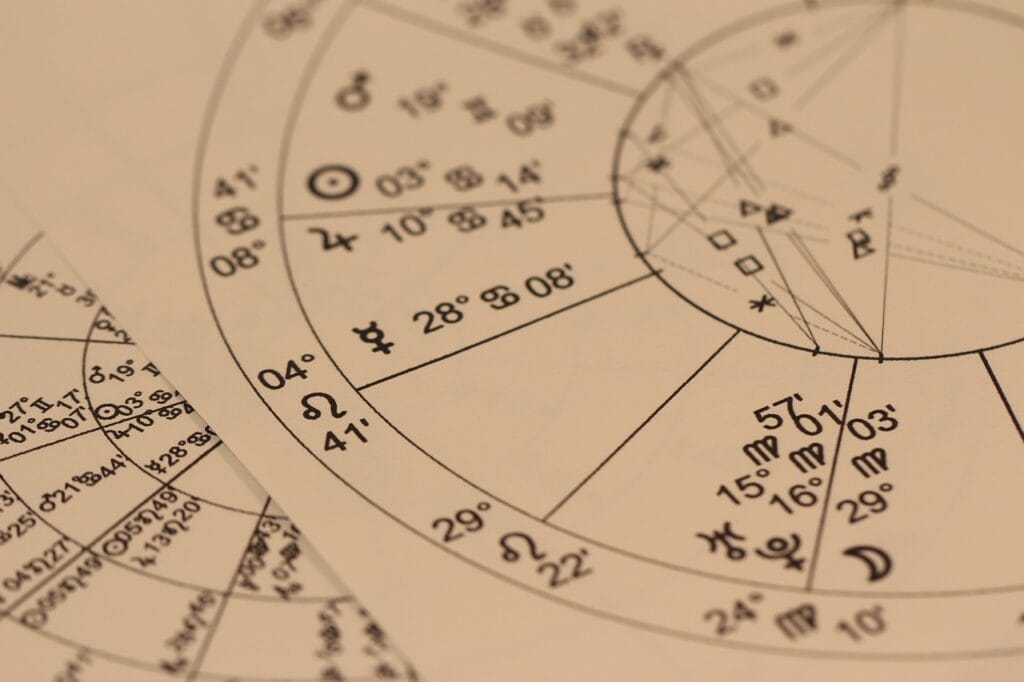By: Leonie Maritz (Zodiac Tarot) | June 19, 2024 | leomaritz@gmail.com
In traditional astrology, the division of the birth chart into hemispheres provides deep insights into an individual’s psychological orientation and life approach. The Eastern and Western hemispheres, in particular, represent distinct paths in self-expression, interpersonal dynamics, and overall life fulfillment. This article explores and compares the characteristics of birth charts dominated by the Eastern hemisphere, marked by independence, versus those dominated by the Western hemisphere, characterized by adaptability and relational engagement.
The Eastern Hemisphere: Independence and Self-Initiation
The Eastern hemisphere of the birth chart includes the 10th, 11th, 12th, 1st, 2nd, and 3rd houses, symbolizing public reputation, goals, community, self-expression, personal identity, and individual initiative. When planets are predominantly located in this hemisphere, they suggest a focus on self-reliance, personal goals, and independent action. Individuals with a dominant Eastern hemisphere often exhibit strong leadership qualities and pronounced individualism. They are self-motivated and may struggle with delegating tasks, feeling that they must take charge and execute tasks independently.
Pros:
- Self-Reliance and Initiative: These individuals are proactive, taking initiative to pursue their goals without heavily relying on others’ input or support.
- Control over Direction: They tend to have a clear sense of personal identity and direction, driven by their own ambitions and desires.
- Focused Self-Development: They prioritize personal growth, developing their skills, and cultivating a strong sense of individuality.
Cons:
- Potential Isolation: Excessive independence can lead to isolation and reluctance to collaborate, hindering opportunities for mutual growth and learning.
- Limited Interpersonal Skills: They might prioritize personal achievements over developing strong interpersonal relationships.
- Difficulty in Collaborative Environments: They may struggle in settings that require teamwork and compromise.
The Western Hemisphere: Adaptability and Relational Engagement
The Western hemisphere includes the 4th, 5th, 6th, 7th, 8th, and 9th houses, representing interpersonal relationships, partnerships, and social engagement. Charts dominated by the Western hemisphere emphasize adaptability, relational skills, and effective social navigation. These individuals are often more passive, preferring collaboration and mutual benefit. They are skilled at manipulating situations for the greater good and rely on support and buy-in from others to create momentum in their lives.
Pros:
- Interpersonal Skills: They excel in forming alliances and collaborating with others, navigating social interactions effectively.
- Adaptability: They can adjust their behaviors and strategies to harmonize with others’ needs and expectations.
- Emotional Intelligence: Their focus on relationships encourages empathy, conflict resolution, and a deep understanding of interpersonal dynamics.
Cons:
- Dependency on Others: They may rely on others for validation, decision-making, or emotional support, limiting personal autonomy.
- Difficulty in Solitude: They might struggle with activities requiring self-reliance and independent thought.
- Risk of Losing Identity: Prioritizing relationships and external validation over personal goals can lead to a loss of individual identity.
Conclusion
The comparison between charts dominated by the Eastern and Western hemispheres highlights contrasting approaches to life and personal fulfillment. The Eastern hemisphere champions independence and self-initiation, offering control over life direction and a strong sense of individuality. In contrast, the Western hemisphere emphasizes adaptability, relational skills, and social engagement, fostering collaboration and empathy.
Ultimately, the specific planetary placements will dictate how an individual honors or defies these hemispheric dynamics, shaping their unique life journey.
References:
- Chimenti, A. (2023). Hemisphere Dominance: The Importance of Hemisphere Dominance in Natal Charts. Retrieved from Mastering the Zodiac.
- Houlding, D. (1998). The Houses: Temples of the Sky. The Wessex Astrologer Ltd.
- Naughtin, L. (2015). Natal Astrology Beginners Course: Hemispheres. Sublunar Academy.




